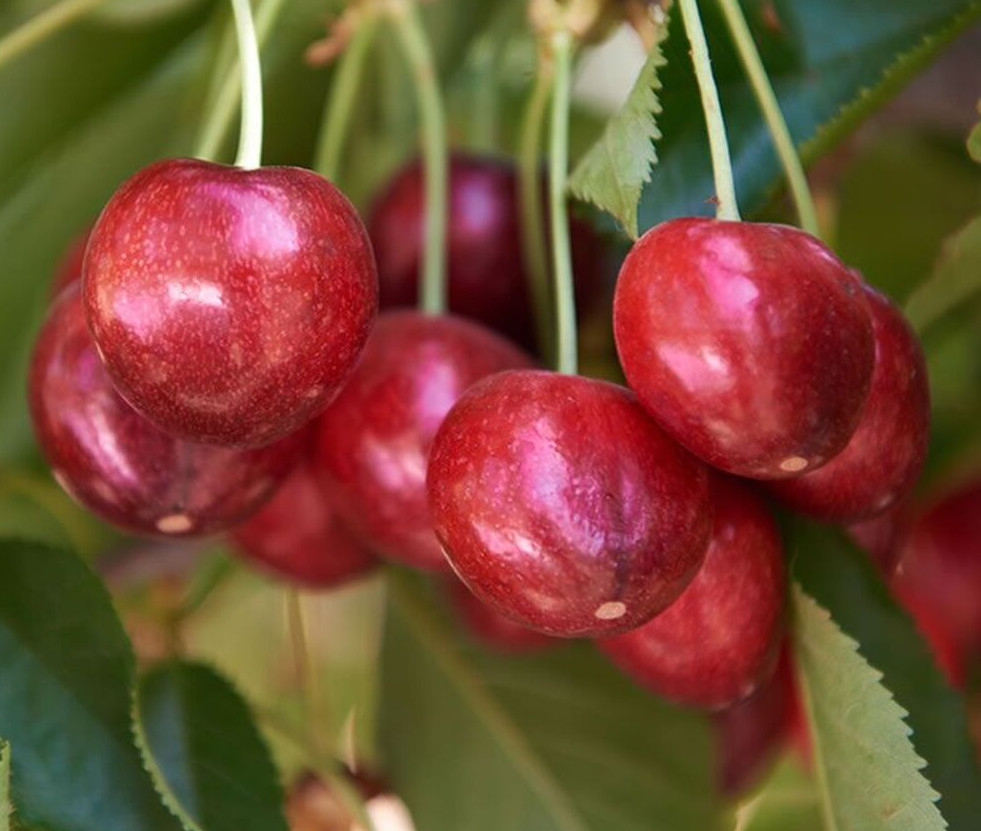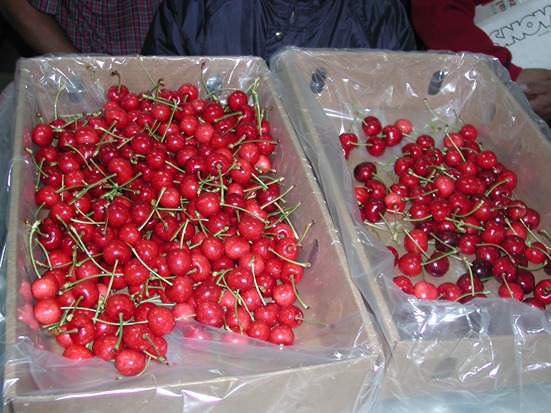It is reasonable to assume that an insect considered a pest in its place of origin has been exposed to all authorized insecticides for its control, making it plausible that it has developed resistance – or at least a certain degree of resistance – to the most widely used products.
The spotted wing drosophila (Drosophila suzukii Matsumura; Diptera: Drosophilidae) is currently the most destructive pest for fruit crops among those introduced in Chile in recent decades. The damage it causes has led, in recent years, to an almost irrational use of synthetic insecticides, creating the ideal conditions for the development of resistance.
The arrival of a new insect species in a country or territory, in the absence of natural predators capable of regulating its population, immediately results in significant economic damage.
As a result, the competent government agencies – in Chile, the Servicio Agrícola y Ganadero (SAG) – are forced to issue temporary authorizations for the use of insecticides from various companies, even in the absence of the legally required registration, in order to combat the new infestation.
Practices and consequences of use
Although this is a widespread global practice, it has a significant drawback: it does not take into account the chemical history of the species in its place of origin. In other words, it is reasonable to believe that an insect already classified as a pest in its country of origin has been treated with all available insecticides, thus developing resistance – or an early stage of it – to the most common active substances.
When a new infestation is first detected in a country, in addition to the proper identification of the species and studying its potential damage and control options – biological, chemical, physical, and ethological – it is essential that the authorities also consider resistance cases reported in other parts of the world, and take into account any control failures, even if not formally documented.
This aspect is particularly relevant regarding the origin area of the invasive species, since it is likely that many of the insecticides authorized in that country are also authorized in the country where the presence is first recorded.
It is therefore logical to hypothesize that the insect has already developed a certain level of "tolerance" to these products. Moreover, Chile – like most Latin American countries – is an importer of agrochemicals and does not develop its own insecticides. The available market options will therefore be the same found elsewhere, as the producing and distributing companies operate on a global scale.
 Figure 1. Selective process of resistant individuals within a population.
Figure 1. Selective process of resistant individuals within a population.
Insecticide resistance
At the beginning of the development of synthetic insecticides, resistance was thought to be exclusively due to poor management practices. According to Metcalf and Metcalf (1939) – and their editions up to the 1990s – the problem could be resolved through chemical group rotation. Today, however, this approach is considered outdated.
The first documented case of resistance dates back to 1914: the San Jose scale (Quadraspidiotus perniciosus Comstock: Diaspididae) developed resistance to lime sulfur in several areas of Washington State, USA (Melander, 1914).
However, in the following decades, most cases occurred in mosquitoes transmitting dengue and malaria, and the first formal definition of resistance was provided by experts from the World Health Organization:
“The ability of a strain of insects to tolerate doses of toxic compounds that are lethal to the majority of the population” (Brown, 1958).
Definitions and developments
The Insecticide Resistance Action Committee (IRAC – www.irac.org) defines insecticide resistance as:
“A heritable change in the sensitivity of a population of insect pests, resulting in repeated failure of an insecticide, applied correctly, to achieve the expected levels of control.”
Rodríguez et al. (2002), on the other hand, provide a definition from an agronomic perspective, stating that:
“Resistance corresponds to the selection of a heritable genetic trait whose phenotypic expression results in the failure, in the field, of the originally effective minimum dose.”
This aspect is particularly relevant, as a common practice among growers is to increase the dose as soon as the recommended one begins to lose effectiveness.
Therefore, a first step in a rational approach to resistance management should be to replace the insecticide, as soon as it starts showing signs of inefficacy, with one belonging to a completely different chemical class.
It is generally assumed that resistance is due to overproduction of enzymes capable of metabolizing insecticides before they can exert their toxicity. However, the situation is more complex, as it involves a microevolutionary and preadaptive process.
This means that tolerant individuals are already present within the population, although in very low percentages, ranging between 10⁻⁸ and 10⁻⁵ (Whitten and McKenzie, 1982). Frequent and irrational insecticide application merely selects these individuals: it eliminates the susceptible ones and favors the spread of the tolerant ones, which over time become predominant (Figure 1).
Types of resistance
There are two main types of resistance: metabolic and non-metabolic (Lagunes and Villanueva, 1994; Yu, 2014). Non-metabolic resistance includes mechanisms that prevent the insecticide from reaching the target site at a lethal concentration.
These mechanisms include:
- reduced penetration due to a thickened exoskeleton;
- behavioral resistance, where the insect “learns” to avoid areas treated with insecticides (Lagunes and Villanueva, 1994).
These mechanisms alone rarely confer complete resistance, but they often combine with metabolic mechanisms to enhance overall effectiveness.
Metabolic resistance
Metabolic resistance mainly occurs through two mechanisms: increased metabolism and insensitivity of the target site (ISA) (ffrench-Constant, 2013).
In the first case, the insect possesses a greater number or more active versions of enzymes capable of metabolizing xenobiotic compounds, thereby preventing the accumulation of the insecticide to toxic levels (Yu, 2014).
These enzymes include:
- esterases, which degrade compounds like organophosphates and carbamates;
- multi-function oxidases (MFO), mediated by cytochrome P450, which act on pyrethroids and growth regulators;
- glutathione-S-transferases (GST), effective against organophosphates and DDT (Pavlidi et al., 2018).
The second mechanism, insensitivity of the target site (ISA), involves a change in the site where the insecticide is supposed to bind. When this site undergoes a mutation, the molecule can no longer attach, thus losing its toxic efficacy (Tabashnik, 1994).
This phenomenon has been observed in resistance to the entomotoxic proteins Cry and Vip of Bacillus thuringiensis Berliner and in the so-called knockdown resistance (kdr) to pyrethroids (Ferré and Van Rie, 2002).
 Image 1
Image 1
Drosophila suzukii and resistance
Like all pest insects subjected to frequent treatments, Drosophila suzukii is also capable of developing resistance, especially when insecticides are used as the sole strategy of control.
Dipterans (flies, mosquitoes, horseflies, etc.) generally have a high biotic potential, characterized by:
- short life cycles (up to 13 generations per season for D. suzukii),
- high reproductive capacity,
- strong environmental adaptability,
- sexual reproduction, which facilitates the emergence and spread of favorable mutations like insecticide tolerance.
The Arthropod Pesticide Resistance Database (APRD) from Michigan State University (https://www.pesticideresistance.org) reports that in the states of California and Georgia, 37 cases of resistance in D. suzukii have been recorded to three active ingredients: bifenthrin (pyrethroids), zeta-cypermethrin (pyrethroids), and spinosad (spinosyns).
However, the scientific literature reports many other cases.
Studies and findings
For example:
- Bruck et al. (2011) evaluated contact insecticides from different chemical groups, showing that neonicotinoids, both in lab and field conditions, were less effective compared to organophosphates, pyrethroids, and spinosyns.
- Mishra et al. (2017) found susceptibility differences between populations collected in Clarke and Pierce counties (Georgia), with Pierce specimens significantly less sensitive to zeta-cypermethrin, malathion, and spinosad than those from Clarke.
- Van Timmeren et al. (2018), after three years of continuous monitoring, observed a significant reduction in susceptibility to zeta-cypermethrin and methomyl, and a slight decrease for malathion and spinetoram.
- Deans and Hutchinson (2022) confirmed that D. suzukii populations in three Minnesota locations have the potential to rapidly develop resistance to zeta-cypermethrin and spinosad.
Sensitivity of Drosophila suzukii
Regarding sensitivity to bioinsecticides, Gress and Zalom (2018) found that spinosad — a widely used insecticide in the Watsonville (California) area in organic berry orchards — showed LC50 values (Lethal Concentration 50%) seven times higher than in areas where the product was not used.
It is worth noting that Watsonville was the first location where D. suzukii was detected, suggesting a case of early resistance. Additionally, Disi et al. (2021) demonstrated that in laboratory conditions, D. suzukii develops high levels of resistance after just 11 generations treated with spinosad.
According to Deans and Hutchinson (2022), the situation is particularly concerning because spinosad is the only insecticide to have shown efficacy as a biological alternative.
In Chile, no studies on resistance in D. suzukii have yet been conducted, but this does not mean that resistant populations do not exist — simply that no one has looked for them. It is therefore essential that insecticide use follows a strategy aimed at minimizing the risk of resistance development.
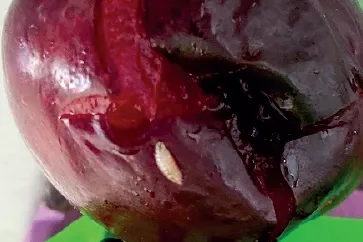 Image 2
Image 2
Resistance management
A Resistance Management Program (RMP) is defined as the science (and art) of applying strategies to keep resistance genes in a population at tolerable levels (Georghiou, 1986).
The RMP is part of Integrated Pest Management (IPM) and starts with the use of all available non-chemical strategies: biological, genetic, behavioral, physical, cultural, and legal control (quarantines). The goal is to reduce pest pressure and thus minimize insecticide use.
Biological control
It is a misconception that biological control is always incompatible with synthetic insecticide use. On the contrary, it is a clean and sustainable method that can help reduce pest populations and the need for chemical treatments.
The higher the presence of natural enemies in an agroecosystem, the lower the pest incidence and insecticide usage, which in turn reduces resistance risks.
However, invasive species like D. suzukii, once introduced into a new country, do not encounter natural predators, resulting in serious damage.
In Chile, INIA (the Agricultural Research Institute) is studying the biological control of D. suzukii at the La Cruz and Quilamapu stations, using the parasitoid Pachycrepoideus vindemmiae, an ectoparasitoid that targets the fly's pupae.
Initial results (Dancau et al. 2016; Da Silva et al. 2019) suggest promising establishment of the parasitoid in Chilean territory.
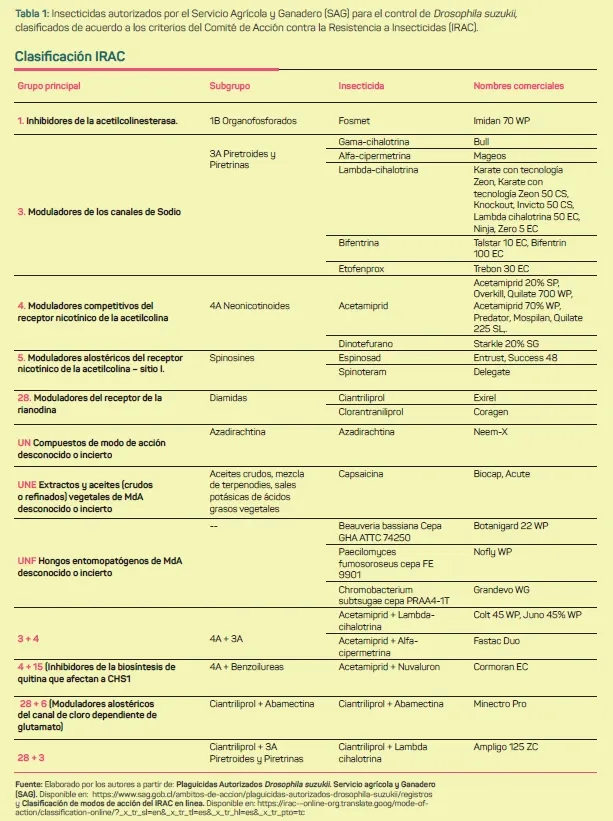 Table 1. Insecticides authorized by the Agricultural and Livestock Service (SAG) for the control of Drosophila suzukii, classified according to the criteria of the Insecticide Resistance Action Committee (IRAC).
Table 1. Insecticides authorized by the Agricultural and Livestock Service (SAG) for the control of Drosophila suzukii, classified according to the criteria of the Insecticide Resistance Action Committee (IRAC).
Cultural measures and practices
Reducing incidence
Daily good agricultural practices can significantly reduce pest pressure.
Leach et al. (2017) showed that harvesting fruit every two days instead of every three greatly reduces the presence of larvae in fruit. It is also recommended to:
- collect and destroy overripe, damaged, or fallen fruit,
- place them in transparent bags and bury them, eliminating up to 90% of larvae.
Monitoring
Monitoring is crucial for IPM. It allows accurate estimation of pest population levels and helps avoid unnecessary treatments based on fixed calendars.
For D. suzukii, there are commercial traps and DIY alternatives using cider or apple cider vinegar (SAG, 2019), although the latter are less selective, making insect identification more difficult.
Rational use of insecticides
According to Caprile et al. (2011), it is essential to eliminate adults before they lay eggs, as insecticides do not act on larvae already present in the fruit.
In Chile, many growers still rely on calendar-based applications, an ineffective strategy that increases selective pressure and the risk of:
- environmental contamination,
- poisoning,
- residues in fruit.
Basic rule: apply insecticides only when traps begin capturing D. suzukii. Applying before increases costs, applying after reduces effectiveness.
An effective product can eliminate 90% of individuals present, but doing so on 10 individuals is different than on 100 or 1,000.
This is why it's crucial to complement chemical control with additional strategies, such as biological control.
Further recommendations
Use only insecticides authorized by SAG and follow a rotation strategy based on IRAC guidelines, which classify products by mode of action and resistance mechanisms.
Table 1 in the article lists the 38 products authorized in Chile for the control of D. suzukii.
Avoid using the most effective products in cases of low infestation. If resistance develops to the “main product,” it becomes unusable, with serious consequences in a market — like Chile’s — that has limited insecticide diversity.
Although having 38 active ingredients may seem sufficient, a closer analysis shows that the actually viable options are much fewer.
 Figures 2 and 3: Website for downloading the IRAC app for insecticide management by resistance mechanism, available on the official page. Available at: https://irac-online.org/mode-of-action/mobile-applications – Google Play page for downloading the IRAC app. Available at: https://play.google.com/store/apps/details?id=irac.moa&hl=es_CL
Figures 2 and 3: Website for downloading the IRAC app for insecticide management by resistance mechanism, available on the official page. Available at: https://irac-online.org/mode-of-action/mobile-applications – Google Play page for downloading the IRAC app. Available at: https://play.google.com/store/apps/details?id=irac.moa&hl=es_CL
Pyrethroids and neonicotinoids
In Chile, pyrethroids, with 12 commercial formulations, and neonicotinoids, with 8 formulations, along with two combination products (pyrethroid + neonicotinoid), together account for 61% of the insecticides authorized (Table 1).
This means that although the national market is diverse in product quantity, it is limited in terms of chemical diversity. As the country imports all active ingredients, it is essential to manage insecticides rationally to avoid losing effectiveness against Drosophila suzukii.
Bioinsecticides: a valuable alternative
A fourth key aspect involves plant-based or microbial bioinsecticides, which are also authorized by SAG for the control of D. suzukii. These include:
- Neem (Azadirachta indica),
- Capsaicin, the active component of chili pepper,
- entomopathogenic fungi such as Beauveria bassiana and Paecilomyces fumosoroseus.
These products should not be evaluated by the same criteria as synthetic pesticides, because they:
- are less persistent,
- less effective in open field conditions,
- but much less likely to trigger resistance due to their complex composition.
To support their use in anti-resistance rotations, it is recommended to:
- apply them at low pest density,
- and apply more frequently due to lower residual action.
The use of refuges
Refuges are a strategic tool in resistance management because they help preserve susceptibility genes in the population. They may include:
- spontaneous plants (e.g., weeds),
- or intentionally maintained attractive plants in the agroecosystem, preferred by the pest for feeding or reproduction (Rodríguez et al., 2022).
As long as the insect stays in the refuge:
- it does not damage the crop,
- and is not exposed to insecticides, remaining susceptible.
If a resistant individual mates with a susceptible one from the refuge, this leads to a genetic dilution of resistance, significantly slowing down its spread.
In Chile, one of the most debated issues is the management of zarzamora (wild blackberry): some experts believe it could serve as a refuge, but strict discipline is required in orchard management to prevent it from becoming a permanent pest hotspot. For this reason, many growers prefer its complete eradication from the field.
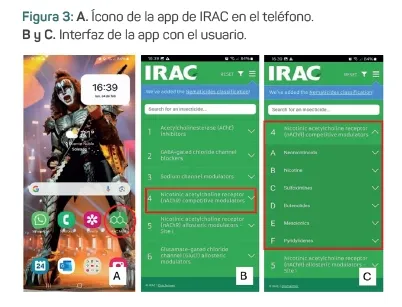 Figure 4. A. IRAC app icon on the phone. B and C. User interface of the app.
Figure 4. A. IRAC app icon on the phone. B and C. User interface of the app.
Digital technologies for support
Today, crop protection can rely on numerous technologies: drones, satellite imagery, advanced spraying systems, and new plant protection formulations.
In the context of insecticide resistance, one simple yet crucial tool is the IRAC app, which classifies insecticides by mode of action and resistance group.
The IRAC app:
- can be downloaded from the IRAC website or from Google Play/Apple Store,
- works on Android and iOS,
- helps avoid consecutive use of products with the same mode of action, reducing the risk of selecting resistant strains.
Once installed:
- it appears on the phone screen (Figure 4A),
- displays IRAC insecticide groups (Figure 4B),
- and when a group is selected, it shows all products with similar modes of action (Figure 4C).
For example, by selecting neonicotinoids (Group 4), the app indicates which products to avoid in the following rotation.
Regularly updated, the app serves as a dynamic and reliable guide for planning plant protection strategies.
A holistic approach
To ensure the sustainability of agricultural production and limit the emergence of resistance in Drosophila suzukii, it is essential to implement an integrated pest management (IPM) plan.
This approach should combine:
- biological control,
- genetic control,
- behavioral control,
- physical control,
- cultural practices,
- and legal measures.
Rational use of insecticides, based on:
- accurate monitoring,
- low-risk rotations,
- and adoption of advanced technologies,
is essential to avoid the collapse of defense strategies.
In summary: only a holistic, multidisciplinary, and proactive approach can effectively counter the threat of insecticide resistance, while protecting profitability, safety, and sustainability of crops.
Source of text and images: mundoagro.cl
Gonzalo Silvia Agazo
Mundoagro
Italian Berry - All rights reserved











